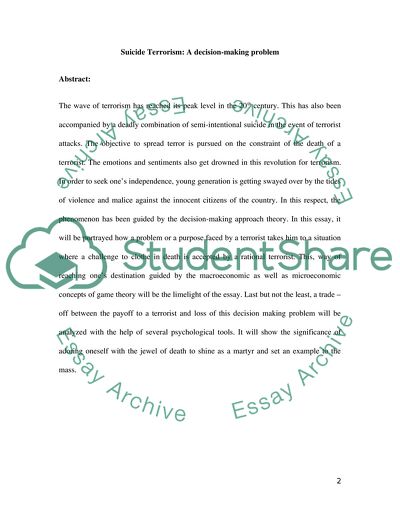Cite this document
(Suicide Terrorism: a Decision-Making Problem Research Paper, n.d.)
Suicide Terrorism: a Decision-Making Problem Research Paper. Retrieved from https://studentshare.org/social-science/1739510-suicide-terrorism-a-decicon-making-approach
Suicide Terrorism: a Decision-Making Problem Research Paper. Retrieved from https://studentshare.org/social-science/1739510-suicide-terrorism-a-decicon-making-approach
(Suicide Terrorism: A Decision-Making Problem Research Paper)
Suicide Terrorism: A Decision-Making Problem Research Paper. https://studentshare.org/social-science/1739510-suicide-terrorism-a-decicon-making-approach.
Suicide Terrorism: A Decision-Making Problem Research Paper. https://studentshare.org/social-science/1739510-suicide-terrorism-a-decicon-making-approach.
“Suicide Terrorism: A Decision-Making Problem Research Paper”, n.d. https://studentshare.org/social-science/1739510-suicide-terrorism-a-decicon-making-approach.


